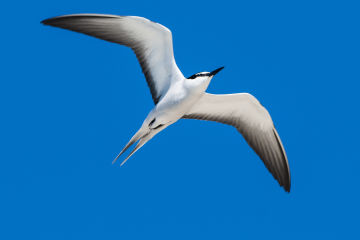News ·
Drones, AI and e-DNA: new ways to keep tabs on Great Barrier Reef and animal health
11 critical monitoring projects to help monitor and protect Reef health
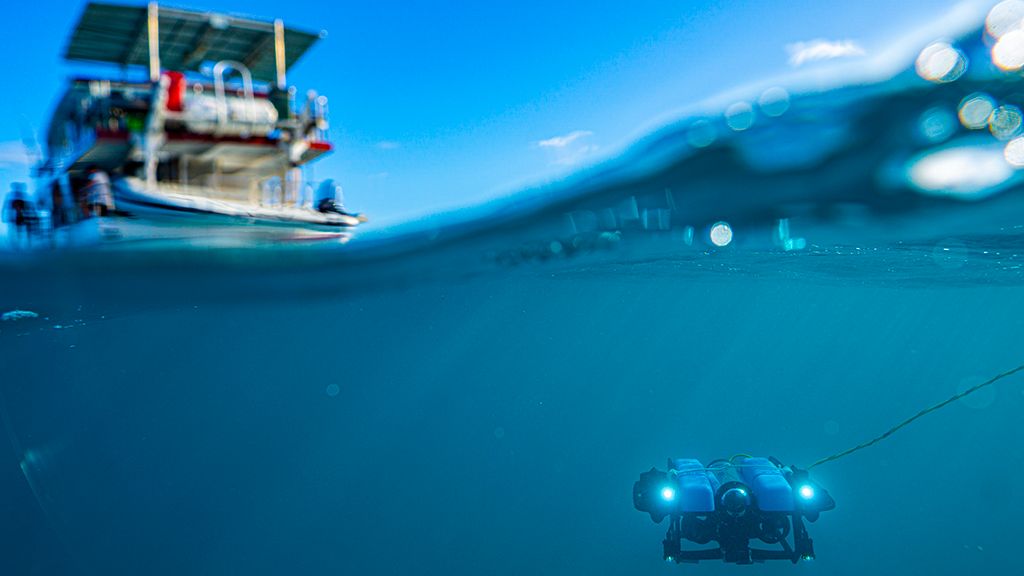
Eleven innovative programs have been launched to keep close tabs on the health of the Great Barrier Reef and the animals that depend on it.
A new suite of critical Reef monitoring projects combine new technologies with on-ground and in-water action to help protect and manage the world’s largest coral reef ecosystem.
Dolphins, fish, sea cucumbers, seabirds, corals, and even rats and ants are in the sights of this new wave of science projects funded by the partnership between the Australian Government’s Reef Trust and the Great Barrier Reef Foundation.
Great Barrier Reef Foundation Managing Director Anna Marsden said the Integrated Monitoring and Reporting Program was designed to have an impact through developing better ways to manage Reef health.
“Our Reef is the size of Japan, or Italy, or 70 million football fields, so the task of monitoring an ecosystem that size is enormous,” Ms Marsden said.
“Tapping into innovations like underwater drones, artificial intelligence and environmental DNA techniques, these 11 new critical monitoring projects will help close some big knowledge gaps that currently exist. Through partnerships and collaboration, we’ll also be able to integrate a range of different Reef health indicators so that Reef managers and researchers can access the best possible information to proactively manage and support our Reef and its marine life.
“The condition and behaviour of individual marine species can tell us a lot about ecosystem health as a whole, so we’ll be looking to these projects to expand the early warning signs of ecological change for better reporting and decision-making, with a clear line of sight to the Reef 2050 Integrated Monitoring and Reporting Program (RIMREP).”
Priority monitoring projects include a world-first sea cucumber assessment, monitoring three key dolphin species, developing the first standardised indicators of coral health and recovery, and supercharging biosecurity surveillance on invasive pest species of ants and rats on Reef islands.
Sea cucumbers: The first assessment of sea cucumber distribution across the entire Great Barrier Reef will use underwater drones, remote-sensing and machine learning techniques to understand more about the short-term and long-term sustainability of commercial fisheries on these sea cucumbers, including protected and threatened species.
Dolphins: By studying three key species of inshore dolphins in the wild – Australian snubfin, Australian humpback and Indo-Pacific bottlenose dolphins – researchers will better understand their distribution and numbers, as well as assessing the threats they’re facing to protect them and contribute to Reef 2050 Plan priorities.
Corals: The first standardised indicators to monitor the condition and recovery capacity of the Reef’s corals will be developed – a massive endeavour that will synthesise more than 100 existing data streams to report on the condition of corals.
Seabirds: Using aerial drones and acoustic recording devices, citizen scientists and Traditional Owners will help researchers collect vital information about the Reef’s globally and nationally significant seabirds including the little tern, bridle tern, crested tern and brown booby.
Reef fish: With the Reef hosting more than 1,600 species of fish, developing the first ever Integrated Reef Fish Monitoring Program, including working with Traditional Owners to co-design the framework, will reveal important insights about different fish habitats including fish nurseries for priority species such as coral trout, stripey snapper, damselfish and butterflyfish.
Cryptic pests: The native flora and fauna of Great Barrier Reef Islands are under increasing threat from invasive species, so innovative technologies including eDNA, machine learning and artificial intelligence will be used to supercharge biosecurity surveillance to get the jump on high-risk ant and invasive rodent species. Detecting these pests early is the key that will enable managers to intervene to protect the islands’ native animals and plants. Yellow crazy ants, electric ants, tropical fire ants and red imported fire ants are in this project’s sights, as are black and brown rats.
Reef islands: Three important gaps in island protection will be closed by developing more efficient survey methods and tools, including opportunities for First Nations people and citizen scientists to help gather much-needed information about changes in island habitats from climate change, severe weather events and biosecurity risks.
These monitoring projects align with and support the Reef 2050 Integrated Monitoring and Reporting Program (RIMREP), which is a key initiative of the joint Australian and Queensland Government Reef 2050 Plan to manage the Great Barrier Reef.
RIMREP brings together monitoring information about the Reef, how people access and use the Reef, and the pressures affecting it, all in one place. This partnership involves the Australian and Queensland governments, Great Barrier Reef Marine Park Authority, Australian Institute of Marine Science (AIMS), Integrated Marine Observing System (IMOS), CSIRO and Traditional Owners.
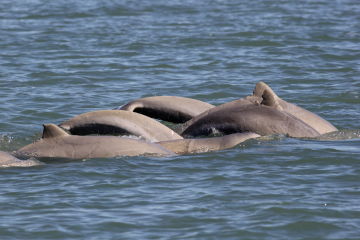
Snubfin dolphins
Image: Southern Cross University
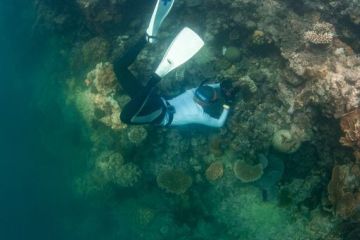
Sea cucumber
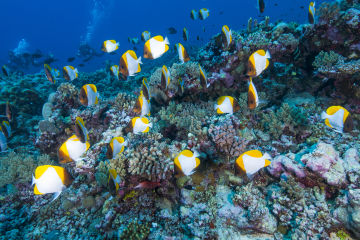
Butterflyfish
